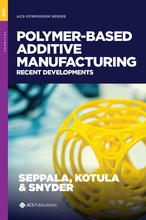Jonathan Seppala (Fed)
Director, nSoft Consortium
Director, nSoft Consortium
nSoft is a consortium designed to deliver technology and expertise within neutron-based measurement science to U.S. based industrial researchers. For over 50 years, neutron methods around the world have been a powerful route to answering key questions in the development and manufacture of “soft materials” such as biodegradable plastics, efficient membranes for energy storage, high strength low density composites for transportation, protein based biopharmaceuticals for cancer treatment, additive systems for water management in soils, and a range of soaps, lotions, and transdermal products.
Prior roles
Jonathan Seppala led the Polymer Additive Manufacturing and Rheology Project, developing multi-modal and in situ measurements that enable control over the complex non-equilibrium material dynamics that characterize soft matter processing. His current research uses infrared thermography, rheology, polarized light, fracture mechanics, and neutron and x-ray reflectivity and scattering to study the polymer physics of thermoplastic additive manufacturing processes. Jonathan earned a B.S. in Chemical Engineering from Michigan Technological University and a Ph.D. in Chemical Engineering from Michigan State University studying the rheology and thermodynamics of polymer nanocomposites. Following his Ph.D., Jonathan worked as a Postdoctoral Researcher studying thin film self-assembly of block copolymers and equilibrium dynamics of amphiphilic micelles at the University of Delaware. Before joining the Additive Manufacturing and Rheology Project, Jonathan studied ballistic witness materials and shear thickening fluids as part of NIST's Personal Body Armor Project.
BOOKS

This book was inspired by the 2017 ACS Symposium “Additive Manufacturing of Structures and Functional Devices: Materials, Methods, Models, and Testing” and is supplemented by additional experts in the polymer AM field. The chapters discuss the technologies, measurement challenges, manufacturing opportunities, and fabrication potentials. We begin with an introduction to polymer additive manufacturing, identifying the measurement needs and technical challenges facing the industry. A chapter reviewing polymer powder bed fusion follows, providing a complete discussion on methods, materials, and applications. The bulk of the book covers thermoplastic material extrusion, with chapters discussing recycling-based feedstocks, composites materials, and multi-physics modeling linking experimentation and theory. Moving from thermoplastics to conductive inks, a chapter on in situ monitoring and control of direct-ink-write provides a clear example of how theory and modern machine vision can be used to create a practical and responsive control system. The last chapter provides a state-of-the-art review of multi-photon printing, discussing methods, materials, and the stunning capabilities of the technique.
Awards
- William P. Slichter Award (2021)
- Adhesion Society Distinguished Paper Award (2017)

